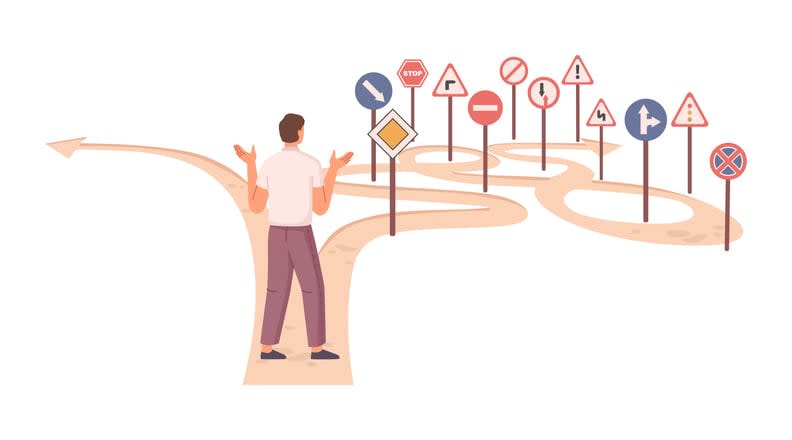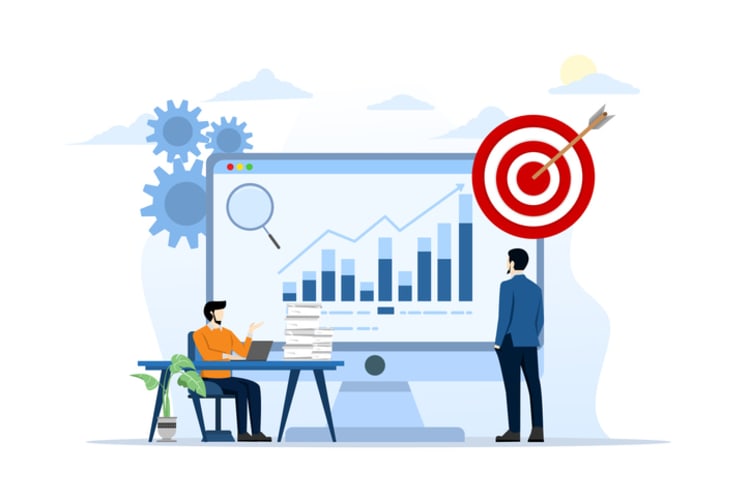Embarking on continuous performance management means transitioning from annual reviews to a dynamic system that encourages employee development all year round. Constructive feedback loops, regular goal reassessment, and alignment with business outcomes define this approach. In this article, we will delve into how continuous performance management operates, its impact on both teams and the broader organization, and the technological tools that make it easier to adopt and maintain.
Key takeaways
- Continuous performance management is critical, fostering ongoing feedback, goal alignment, and development for employee growth, benefiting from immediate corrections and a transparent environment.
- Technology, especially software like Kumospace, plays a pivotal role in continuous performance performance management by facilitating real-time communication, improving team collaboration, and integrating with existing tools for seamless operations.
- Successful continuous performance management requires leadership buy-in, comprehensive training, and a strong feedback culture, ensuring alignment with organizational goals and driving effective performance strategies.
Understanding continuous performance management

Understanding how continuous performance management works is crucial in today’s dynamic work environment. It is an ongoing process that drives regular feedback, goal setting, and development to fuel employee growth and organizational success, especially in today’s flexible work trends where remote work is increasingly common. Unlike traditional appraisal systems, the continuous performance management process fosters a culture of continuous improvement and offers benefits like immediate course corrections, a transparent work environment, and increased job satisfaction. Implementing continuous performance management software can further enhance these benefits and streamline the process.
An effective performance management strategy includes the following components:
- Encouraging employees to adopt a growth mindset
- Rewarding positive actions
- Facilitating team performance and alignment with company goals
- Providing regular feedback
- Conducting 1-on-1 development conversations
- Inspiring employees to self-reflect and bridge performance gaps
- Fostering trust, accountability, and rapid improvements
By implementing these strategies, organizations can create a culture of continuous improvement and drive employee performance.
Definition and key components
In a nutshell, continuous performance management encourages employee growth through regular feedback, goal setting, and development, ultimately leading to organizational success. It’s a comprehensive system where managers equip themselves with the necessary knowledge and tools to deliver impactful coaching to direct reports, driving significant improvements.
The personal development of employees is a key emphasis of continuous performance management. The goal of this approach is to bolster and facilitate the growth of each team member. Prioritizing this aspect not only leads to happier, engaged employees but also improved work outcomes. Clear communication and outlining a clear pathway for career progression within the organization play a significant role in driving success and productivity.
Importance in today's work environment
In today’s fast-paced business landscape, continuous performance management is no longer a luxury but a necessity. It offers amazing benefits, including improved employee engagement, productivity, and alignment with organizational objectives, positioning it as a more effective alternative to the traditional annual performance review.
Highlighting the relation between employee contributions and company success during performance discussions fosters alignment of individual goals with organizational objectives, thereby driving success. Also, continuous performance management allows managers to coach ‘middle’ performers and empowers them to realize their value, leading to increased engagement and productivity.
The role of technology in continuous performance management
Technology has become an indispensable tool in enabling continuous performance management. It provides efficient tools to track goals, offer feedback, and monitor progress. Communication tools make it easy to have regular check-ins and discussions, which promote real-time collaboration and feedback. This is facilitated by tools that enable seamless communication and engagement among team members.
Additionally, technology plays a pivotal role in tracking and managing performance, effectively monitoring employee goals, and ensuring productivity and alignment with organizational goals.
A prime example of technology transforming performance management is Kumospace and its virtual office, which provided a centralized hub to streamline its performance management process, fostering a culture of open communication.
Software solutions: introducing Kumospace
One of the standout software solutions in this realm is Kumospace, a virtual office software that provides a virtual workspace for remote and hybrid teams. Kumospace offers an array of desktop and mobile apps for Mac, Windows, Linux, iOS, and Android, enabling teams to seamlessly join virtual meetings from any location, thus enhancing the convenience and effectiveness of team collaboration.
Kumospace also brings in unique features that revolutionize virtual interactions. One of its notable attributes is the immersive, spatial audio experience, allowing users to engage in more natural, lifelike conversations. As users move closer to others within the virtual space, the volume of voices increases, simulating real-life interactions. This feature helps create a sense of physical presence, making virtual meetings feel more personal and engaging. In addition, Kumospace provides advanced people analytics that give organizations crucial visibility into how their team is spending their time, offering valuable insights into team productivity.
Integrating with existing tools
Integration is another powerful feature of Kumospace. It seamlessly integrates with other productivity tools, providing interactive whiteboards for brainstorming and screen-sharing capabilities to enhance presentations.
There are several success stories of companies that have effectively integrated Kumospace with other tools for performance management, offering inspiring examples of how technology can supercharge performance management. For those looking to integrate software to facilitate continuous performance management, Kumospace is a great option to consider.
Best practices for implementing continuous performance management

Implementing continuous performance management successfully requires a strategic approach and adherence to best practices. This involves securing leadership buy-in, offering comprehensive training and support, and establishing a feedback culture.
To create a compelling vision that synchronizes with organizational goals and involve senior leaders from the start, leadership buy-in is vital. Additionally, providing the necessary training and resources to managers and employees helps them adapt to the new performance management process. Lastly, fostering a feedback culture promotes clear, ongoing communication and active employee development, essential for supporting continuous performance management.
Leadership buy-in
Securing leadership buy-in is an essential step for successful implementation of continuous performance management. It helps drive business impact and ensures that performance management initiatives receive the necessary support from top management, aligning them with organizational goals and culture.
Involving senior leaders, the development of a performance management strategy can be better positioned to align with the organization’s mission, vision, goals, and culture, ensuring that performance management activities effectively foster desired outcomes. Executive sponsors play a crucial role in championing the continuous performance management initiative, rallying other leaders around the idea, and proactively tackling any obstacles that may arise during the implementation phase.
Training and support
Another key component for implementing continuous performance management effectively is the provision of necessary training and guidance to managers and employees. Empowering managers with the right coaching and equipping both managers and employees with the resources and guidance they need to seamlessly adapt to the new performance management process is crucial.
Managers need to embrace meaningful, motivating conversations and manage performance continuously with a coaching mindset to excel in their roles. Adopting Agile goal setting and the use of OKRs, ensuring ongoing development conversations, and fostering continuous 360 feedback can create a comprehensive understanding of performance dynamics, empowering managers to excel in continuous performance management.
Establishing a feedback culture
For continuous performance management, the establishment of a feedback culture is vital. An organization should:
- Enthusiastically promote clear, ongoing communication
- Actively foster employee development through frequent feedback
- Seamlessly integrate recognition and rewards with continuous feedback.
Creating a feedback culture fuels:
- Employee growth and organizational success through performance enhancement
- Open communication
- Continuous improvement
- Individual and team development
- Creating a positive workplace
- Improving communication skills
- Offering critical performance metrics and business insights.
Implementing continuous feedback mechanisms, using multiple feedback channels, and embedding a continuous feedback culture through healthy habits can build an environment that fully supports continuous performance management.
Overcoming challenges in continuous performance management

Despite its many benefits, implementing continuous performance management is not without its challenges. Organizations often face resistance to change, time and resource constraints, and the difficulty of balancing qualitative and quantitative metrics. However, these challenges can be overcome with effective strategies and a commitment to continuous improvement.
Understanding the reasons behind resistance to change and effectively addressing these concerns through change management strategies can help to overcome this hurdle. Similarly, time and resource constraints can be addressed by dedicating adequate time for regular check-ins and feedback sessions, and committing to fostering collaboration, frequent communication, and real-time feedback.
Lastly, incorporating both qualitative and quantitative factors can ensure a comprehensive approach to performance management.
Resistance to change
When implementing continuous performance management, resistance to change can pose a significant hurdle. Understanding the reasons behind the resistance and effectively addressing these concerns through change management strategies can help to overcome this challenge.
Implementing effective change management strategies involves educating, training, and listening to employees, timing the changes strategically, offering rewards, and aligning with the company culture. Emphasizing the benefits of continuous performance management such as quicker performance improvements, enhanced collaboration, swift conflict resolution, heightened employee engagement, improved goal alignment, and faster identification of performance issues can inspire others to embrace this powerful approach.
Time and resource constraints
In the implementation of continuous performance management, time and resource constraints can emerge as a significant challenge. However, these constraints can be transformed into opportunities to innovate and find new ways to conduct regular check-ins and provide quality feedback. Some strategies to tackle time and resource constraints include:
- Automating and centralizing the performance review process
- Embracing real-time feedback
- Fostering dynamic employee engagement
- Focusing on increased cost efficiency and improved productivity
- Improving communication and time management
- Minimizing risk
By adopting these strategies, organizations can effectively address time and resource constraints in continuous performance management.
Kumospace, with its innovative virtual meeting platform, can play a crucial role in facilitating the implementation of continuous performance management, particularly in the face of time and resource constraints. Here's how it aligns with the suggested strategies:
- Automating and centralizing the performance review process: Kumospace's user-friendly interface and customizable spaces can streamline performance reviews, centralizing them in an engaging and interactive online environment.
- Embracing real-time feedback: Kumospace's spatial audio and video capabilities allow for immediate, face-to-face feedback, mimicking in-person interactions.
- Fostering dynamic employee engagement: The immersive virtual environments in Kumospace can create a more engaging experience for employees, boosting participation and attentiveness during performance discussions.
In summary, Kumospace's unique virtual meeting capabilities align well with the strategies for overcoming time and resource constraints in continuous performance management, offering an innovative and efficient solution.
Balancing qualitative and quantitative metrics
For a comprehensive approach to performance management, it’s essential to balance qualitative with quantitative metrics. Incorporating both qualitative and quantitative factors can create a comprehensive view of an employee’s performance, unlocking their full potential, and driving success in continuous performance management.
Avoiding common mistakes such as spending excessive time and resources on collecting and analyzing metrics and ensuring equal attention to both qualitative and quantitative metrics can ensure a successful balance. Platforms like Kumospace provide a comprehensive solution for balancing qualitative and quantitative performance metrics, enabling analysis of key metrics on employee performance and development.
Success stories: companies embracing continuous performance management

There are several inspiring examples of companies that have successfully implemented continuous performance management and reaped its benefits. Learning from these success stories can provide valuable insights and guidance for organizations looking to embark on a similar journey.
Companies such as Cargill and Adobe, which have embraced continuous performance management, have witnessed remarkable performance improvements and a significant reduction in voluntary employee turnover. They transitioned from traditional annual reviews to an ‘Everyday Performance Management’ system, emphasizing daily interactions between managers and employees for ongoing performance discussions.
Company A

Company A serves as an inspiring example of a company that has successfully implemented continuous performance management. They faced initial challenges including:
- Poorly designed system
- Lack of integration with existing processes
- Insufficient leadership commitment
- Neglect of change management
- Incompetence
They overcame these challenges through the following strategies:
- The bold elimination of yearly performance reviews
- Shifting towards frequent, developmental discussions between management and employees
- Focusing on personal development
- Setting and adjusting goals based on progress
By implementing these strategies, they not only improved employee performance but also significantly reduced turnover.
Company B

Company B also serves as an inspiring example of successful continuous performance management implementation. They faced challenges such as:
- Leadership buy-in
- Employee motivation and morale
- Annual performance reviews being too rigid
- Inadequate feedback
- Lack of clear objectives
- Lack of engagement from managers and employees
They managed to overcome these challenges and enhance their performance management by adopting a step-wise approach, consequently driving better business results. The steps they took include:
- Giving feedback regularly
- Setting clear expectations
- Offering quality feedback
- Initiating performance conversations
- Embracing real-time feedback
These actions bolstered dynamic employee engagement in Company B.
Summary
In conclusion, continuous performance management is an essential strategy for driving employee growth and aligning individual performance with organizational goals. It fosters a culture of continuous improvement and offers benefits like immediate course corrections, a transparent work environment, and increased job satisfaction.
Overcoming common challenges, such as resistance to change, time and resource constraints, and balancing qualitative and quantitative metrics are crucial for successful implementation. As illustrated by the success stories of Companies A and B, continuous performance management can significantly improve performance and reduce turnover, reinforcing its critical role in organizational success.
Frequently asked questions
Continuous performance management is a process that revolves around regular feedback, open communication, and coaching, which ensures that employees feel valued and engaged. This ongoing approach helps boost morale and job satisfaction.
Performance management is a continuous process of providing feedback, setting goals, and engaging in open communication with employees. This ongoing cycle ensures continuous improvement and the achievement of strategic objectives.
Continuous performance means performance management processes that take place throughout the year on an ongoing basis, as opposed to traditional, one-off annual appraisals. It is a holistic and continuous approach to managing performance.
When it comes to continuous performance management, there are great practices to keep in mind, ensuring effective and ongoing improvement. These practices help in creating a supportive and growth-focused work environment.
Continuous performance management is important in today's work environment because it leads to improved employee engagement, productivity, and alignment with organizational objectives. Platforms like Kumospace facilitate this modern approach by offering a virtual space that is conducive to frequent and informal check-ins. Its interactive and immersive environment, simulating a physical office space, encourages spontaneous conversations and interactions, essential for ongoing feedback and coaching.





